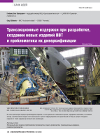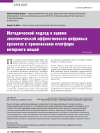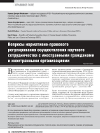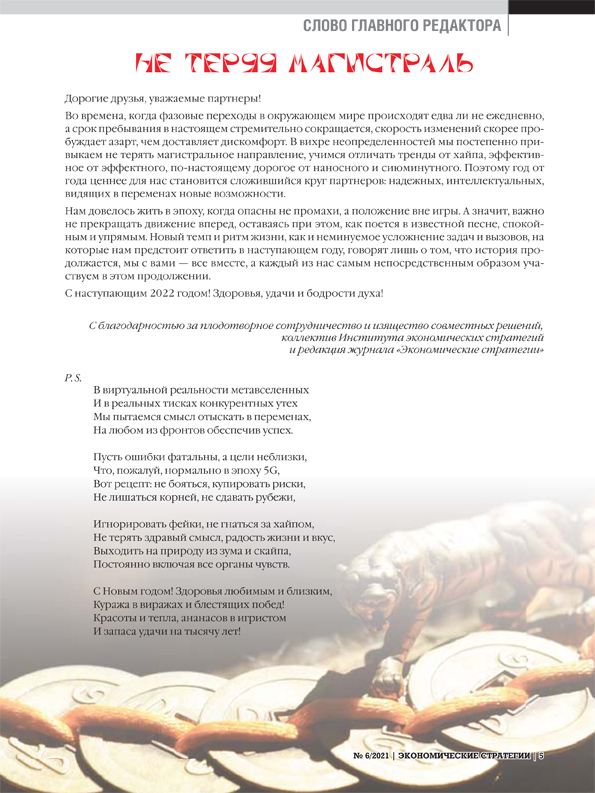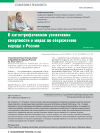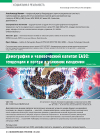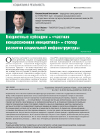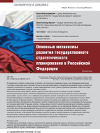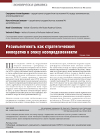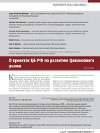Transaction Costs in Development and Creation of New Weapons and Military Equipment and the Problems of Their Diversification
DOI: https://doi.org/10.33917/es-6.180.2021.126-133
The article examines manufacturing process of a product from the life cycle point of view, identifies the key, according to the author, problematics of each life cycle stage. An alternative view of the product creation process from the stage of conception to the moment of its utilization is formulated.
Источники:
1. GOST R 15.000–2016 “Sistema razrabotki i postanovki produktsii na proizvodstvo. Osnovnye polozheniya” [GOST R 15.000–2016 “System of Product Development and Launching into Production. Basic Provisions”]. Kodeks, available at: https://docs.cntd.ru/document/1200141161.
2. GOST RV 15.004–2004 “Sistema razrabotki i postavki produktsii na proizvodstva. Voennaya tekhnika. Stadii zhiznennogo tsikla izdelii i materialov” [GOST RV 15.004-2004 “System of Product Development and Delivery to Production Facilities. Military Equipment. Life Cycle Stages of Products and Materials”]. VII SFU, available at: https://vii.sfu-kras.ru/images/Gost1.pdf.
3. GOST R 56135–2014 “Upravlenie zhiznennym tsiklom produktsii voennogo naznacheniya. Obshchie polozheniya” [GOST R 56135–2014 “Life Cycle Management of Military Products. General Provisions”]. Kodeks, available at: https://docs.cntd.ru/document/1200115460.
4. Federal’nyi zakon ot 29 dekabrya 2012 g. “O gosudarstvennom oboronnom zakaze” [Federal Law of December 29, 2012 “On the State Defense Order”]. Konsul’tantPlyus, available at: https://www.consultant.ru/document/cons_doc_LAW_140175/
5. Prikaz Ministerstva oborony RF ot 21 dekabrya 2017 g. N 792 “Ob utverzhdenii Obyazatel’nykh trebovanii v oblasti tekhnicheskogo regulirovaniya k oboronnoi produktsii (rabotam, uslugam), yavlyayushcheisya pod”emnymi sooruzheniyami i oborudovaniem, rabotayushchim pod davleniem, v sostave vooruzheniya i voennoi tekhniki, postavlyaemoi dlya Vooruzhennykh Sil Rossiiskoi Federatsii po gosudarstvennomu oboronnomu zakazu, protsessam proektirovaniya (vklyuchaya izyskaniya), proizvodstva, stroitel’stva, montazha, naladki, ekspluatatsii, khraneniya ukazannoi produktsii” [Order of the Ministry of Defense of the Russian Federation of December 21, 2017 No. 792 “About Approval of Mandatory Requirements in the Field of Technical Regulation to the Defense Products (Works, Services) which are Lifting Constructions and the Equipment Working Under Pressure as Part of Arms and the Military Equipment Delivered for the Armed Forces of the Russian Federation According to the State Defense Order, Design Processes (Including Research), Production, Construction, Installation, Adjustment, Operation, Storage of the Specified Products”]. Kodeks, available at: https://docs.cntd.ru/document/542617054.



